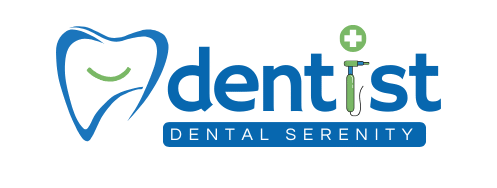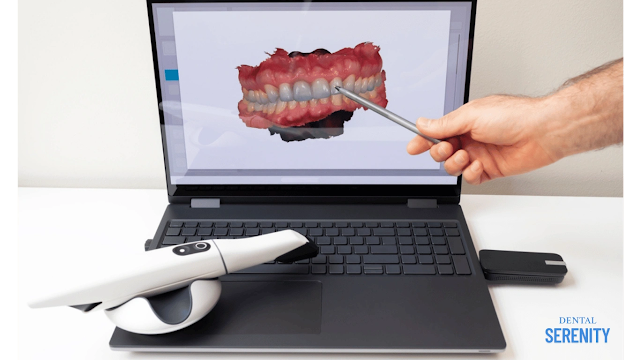ICAD & Trios Intraoral Scanners
ICAD and Trios intraoral scanners are advanced technologies used in modern dentistry to enhance the precision and efficiency of diagnostic and treatment procedures. These scanners have revolutionized the way dental professionals capture impressions of patients’ teeth and oral structures. Traditional impression techniques often involved messy materials and uncomfortable procedures for patients, but the introduction of intraoral scanners has significantly improved both patient experience and clinical outcomes. The following sections explore the features, benefits, and applications of ICAD and Trios intraoral scanners.
ICAD, or the Intelligent Computer-Aided Design, is a dental scanning technology designed to capture high-quality, detailed 3D images of the mouth and teeth. ICAD systems are known for their accuracy and speed, providing dental professionals with a digital impression that can be used for various purposes, including creating crowns, bridges, veneers, and other restorations. The ICAD system uses advanced scanning technology to capture detailed surface data of the teeth, gums, and other oral structures. This data is then processed by specialized software to create a digital model of the patient’s mouth, which can be used to design custom dental restorations.
The Trios intraoral scanner, developed by 3Shape, is another cutting-edge device that has gained widespread popularity in dental practices. Like the ICAD system, the Trios scanner captures high-quality digital impressions of the teeth and soft tissues of the mouth. The Trios scanner is known for its ability to produce fast and precise scans with minimal patient discomfort. It uses an advanced optical system to capture thousands of images per second, which are then combined to create a 3D model of the patient’s mouth. The scanner is typically handheld, allowing the dentist to easily move it around the mouth to capture images of different areas.
One of the primary advantages of both ICAD and Trios intraoral scanners is their ability to eliminate the need for traditional physical impressions. Traditional impressions often involved the use of uncomfortable materials that had to be placed in the patient’s mouth for several minutes while the material hardened. This process could be messy, uncomfortable, and sometimes resulted in inaccurate impressions due to patient movement or difficulty with the materials. With the ICAD and Trios scanners, dental professionals can quickly capture highly accurate digital impressions without the mess and discomfort of traditional methods.
These scanners are particularly beneficial for patients who have a strong gag reflex or difficulty keeping impressions in their mouths for extended periods. Since the scanning process is non-invasive and does not require the use of impression materials, patients are more likely to feel comfortable during the procedure. This leads to a more positive patient experience and can help reduce anxiety associated with dental visits. Additionally, the digital impressions captured by ICAD and Trios scanners can be easily stored, shared, and accessed by dental professionals, making it easier to collaborate with other specialists or labs when designing restorations.
The accuracy of both ICAD and Trios intraoral scanners is another key benefit. These scanners are designed to capture highly detailed and precise images of the patient’s teeth and oral structures, resulting in accurate digital models. The detailed 3D models created by the scanners allow dental professionals to design custom restorations that fit perfectly and function properly within the patient’s mouth. This level of precision is particularly important when designing crowns, bridges, and other dental restorations that must fit tightly and comfortably with the surrounding teeth.
ICAD and Trios scanners also offer significant time-saving benefits. Traditional impression techniques often required multiple visits to the dental office, including one for the impression and another for fitting the restoration. With digital impressions, the entire process can be streamlined, as the digital model can be sent directly to the lab for fabrication. This reduces the need for physical impressions, temporary restorations, and multiple appointments. The ability to quickly and accurately create digital models also speeds up the production of custom restorations, leading to faster turnaround times and more efficient treatment.
Another advantage of these intraoral scanners is their ability to integrate with other digital technologies used in modern dental practices. For example, the digital models created by the ICAD and Trios scanners can be easily imported into computer-aided design (CAD) software, where dental professionals can design custom restorations with precision. The integration of these technologies allows for a seamless workflow, from the initial scanning process to the final restoration. This digital workflow also helps reduce human error and improves the overall efficiency of dental procedures.
The use of ICAD and Trios intraoral scanners also supports more sustainable dental practices. Traditional impression materials often generated waste, as they were single-use and could not be recycled. By using digital impressions, dental professionals can reduce their environmental impact by eliminating the need for disposable materials. The digital files can be stored indefinitely without taking up physical space, further reducing waste in the dental office. This eco-friendly approach is an attractive feature for many dental practices that are looking to minimize their environmental footprint.
In terms of applications, ICAD and Trios intraoral scanners are used in a wide range of dental procedures. They are commonly used for designing crowns, bridges, dentures, and veneers. The scanners are also frequently used in orthodontics for creating clear aligners and other orthodontic appliances. The detailed digital impressions captured by the scanners allow for precise planning and design of these treatments, ensuring that the final results meet the patient’s needs. Additionally, the scanners can be used for planning implant surgeries, as the 3D models provide valuable information about the bone structure and the positioning of the implants.
Both ICAD and Trios intraoral scanners have advanced software capabilities that make it easier to visualize and plan treatments. The software allows dental professionals to view the digital impressions in three dimensions, making it easier to identify potential issues and plan the best course of action. The ability to manipulate and rotate the 3D models provides a clearer understanding of the patient’s anatomy, which helps improve the accuracy of restorations and other treatments.
In conclusion, ICAD and Trios intraoral scanners are transformative technologies that have revolutionized the way dental professionals capture impressions and design restorations. These scanners offer numerous benefits, including improved accuracy, faster treatment times, enhanced patient comfort, and the ability to integrate with other digital technologies. As the dental industry continues to adopt digital tools and technologies, the use of intraoral scanners will only become more widespread, leading to more efficient and effective dental care for patients. Whether used for designing crowns, bridges, dentures, or orthodontic appliances, these scanners are an essential tool in modern dentistry, improving the overall quality of care and patient satisfaction.

